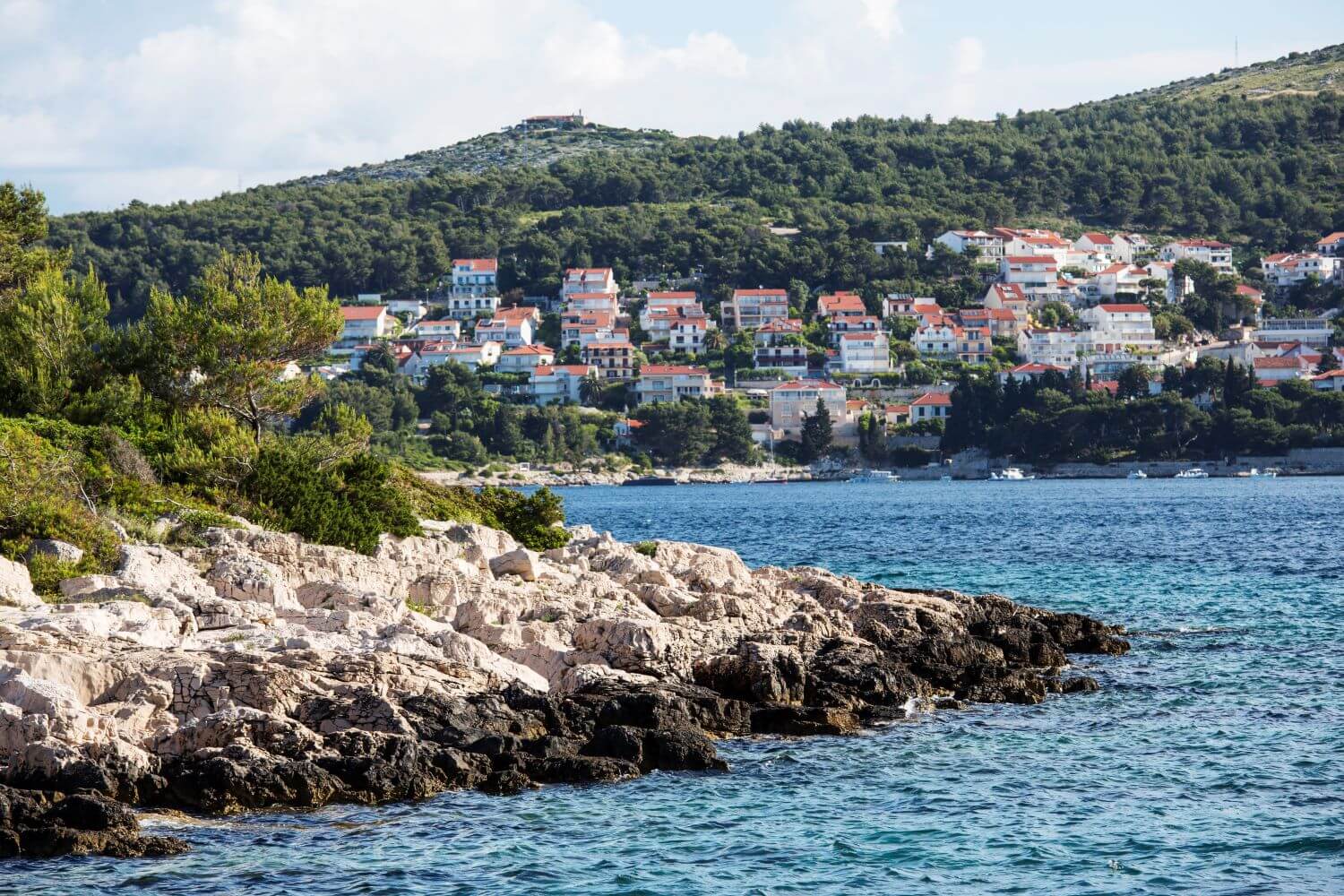- << Back to guides index
Sample Itineraries
Our routes are all about the Experiential Travel. The great thing about the Experiential Travel is that is wonderfully fragmented and run by local people following their personal passions. Here we share some of the unique experiences offered to our clients.
YACHTING ZADAR AND REMOTE ISLANDS OF KORNATI
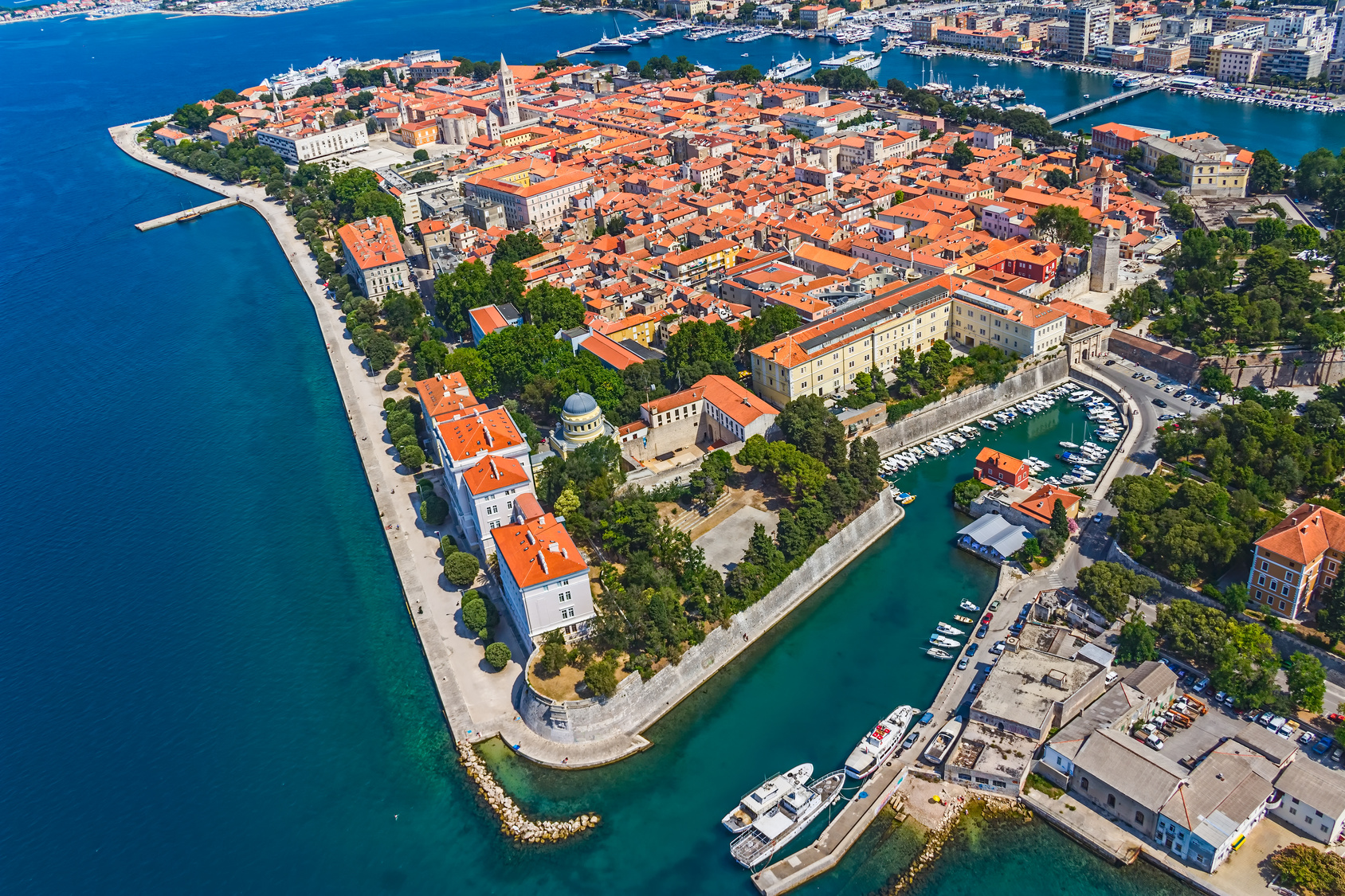
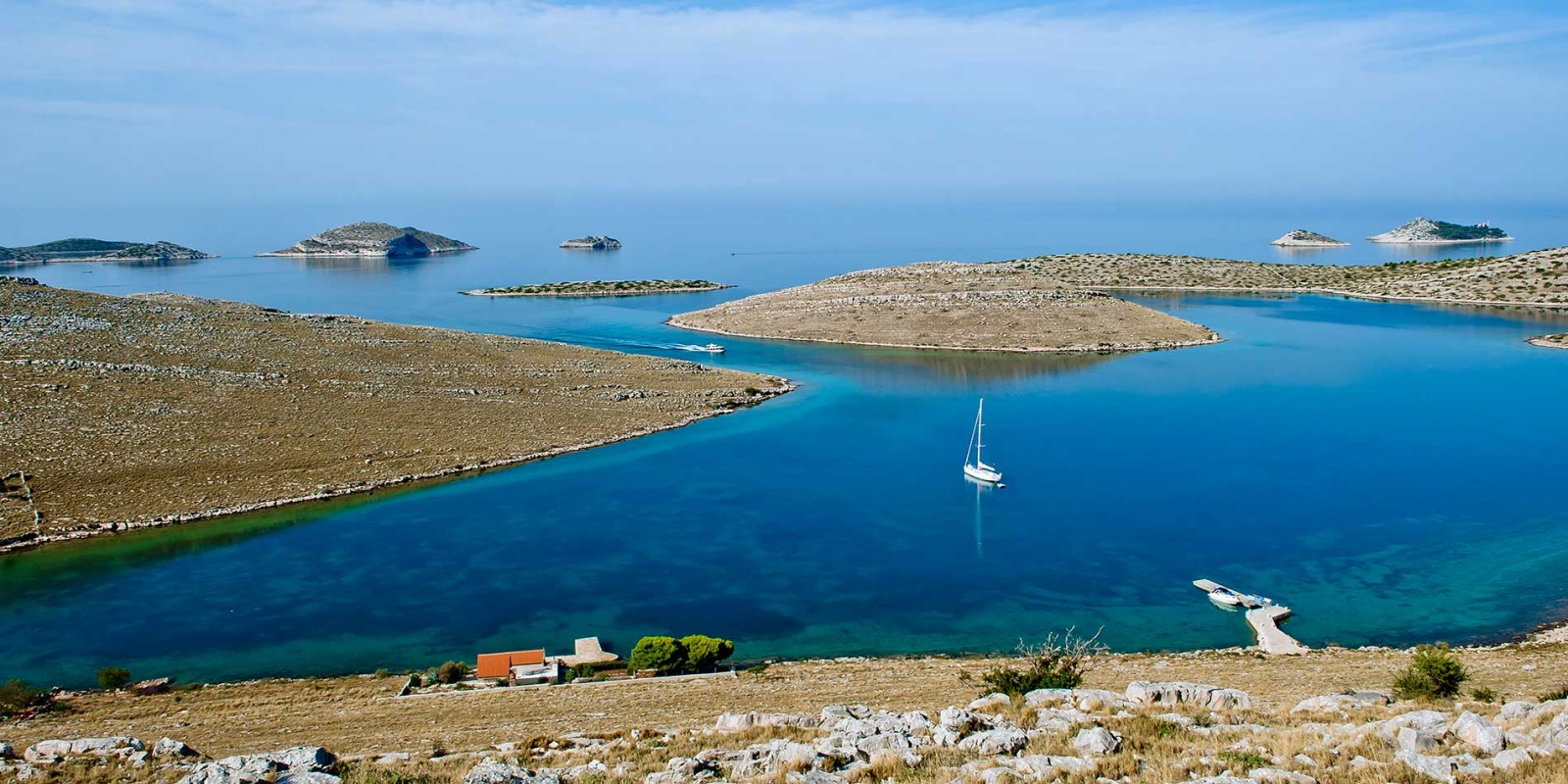
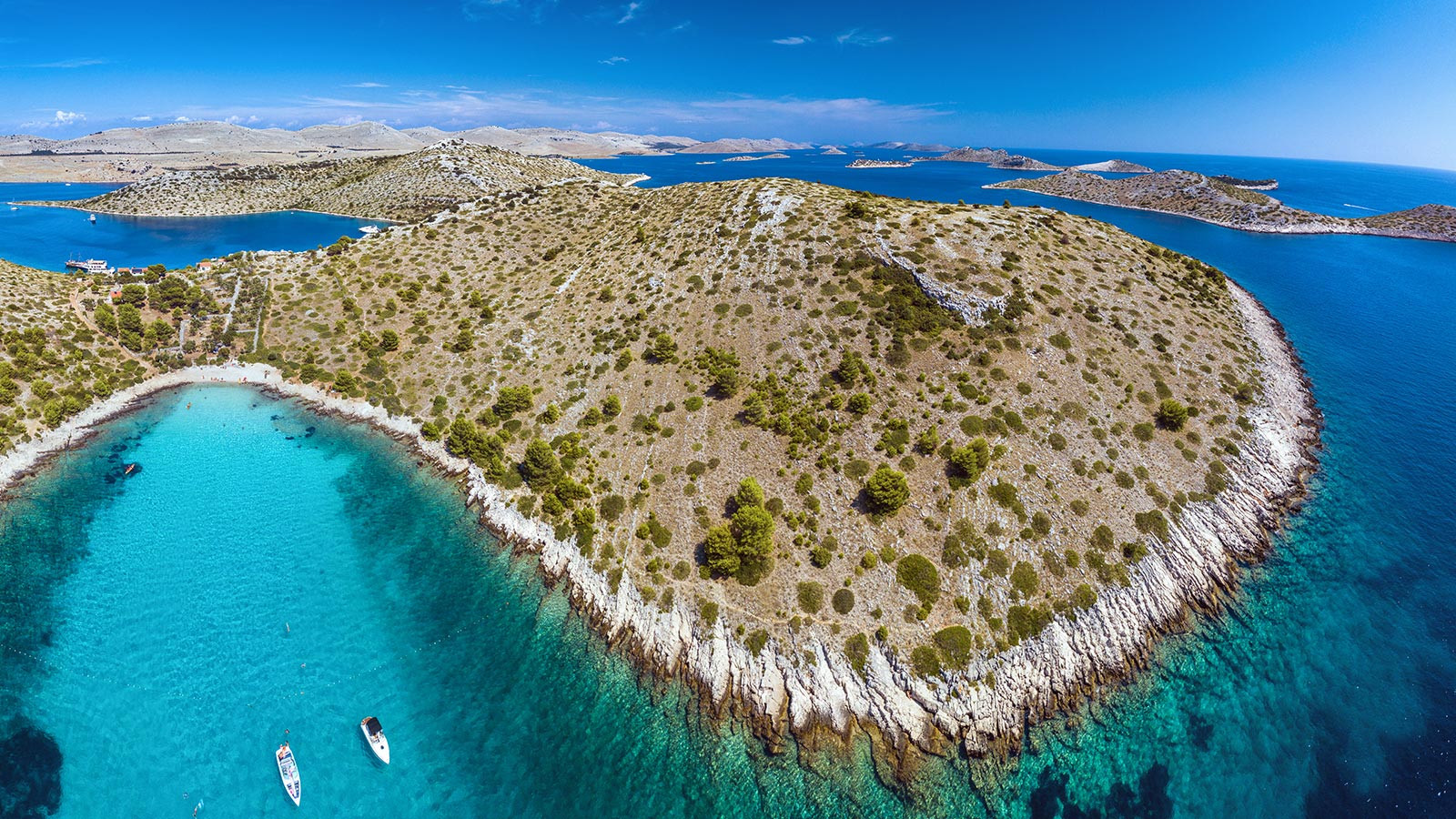
After the Croatian soccer team captured the world’s attention in the World Cup and everybody heard of a little fella called Luka Modric – soccer fans revved up their search engines and learned that Mr. Modric hails from Zadar, a pretty, compact town on the Dalmatian Coast. Zadar is located north of Split, and is less visited than the hot spots of Split, Hvar and Dubrovnik. Beyond Zadar’s medieval core and its famous street Kalelarga, the city’s seaside promenade and music-making “sea organ,” created by the architect Nikola Basic, is a must-see (or hear). The magical sunsets alone were enough to wow Alfred Hitchcock, who visited the city in 1964, and said he’d witnessed the most beautiful sunset in the world there. The town is also a gateway to the remote islands of Kornati Archipelago, especially Dugi Otok; a sparsely populated island with uncrowded beaches and taverns serving seafood. Seeking ultraclean waters? Then set your sails to the island of Pasman, where the currents frequently change, making the surrounding waters some of the cleanest in the Adriatic. The area is remote and if you would like to leaev the civilisation behind, this is the place to be. Wake up to a complete silence, enjoy the peace and quiet, re-charge your batteries, read a book, meditate, do yoga, walk up the Telascica lake and up to the cliffs. Yachting in Zadar is for soul - searching. When you return to Zadar, try the local drink that has become one of the city's specialties. Maraschino is a drink made from a unique variety of maraska cherry grown in the region, and it can be had in alcoholic or nonalcoholic forms. According to legend, alcoholic Maraschino, usually a treacly sweet cherry liqueur, was first made by monks in the 16th century and was thought to improve the disposition. Today the liqueur is made in Zadar in a factory near the footbridge.
GASTRONOMIC DELIGHTS OF ISTRA
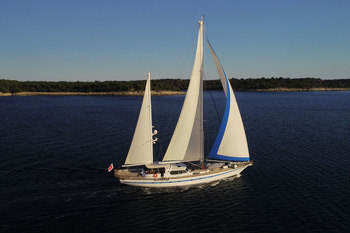
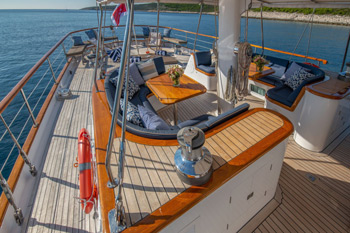
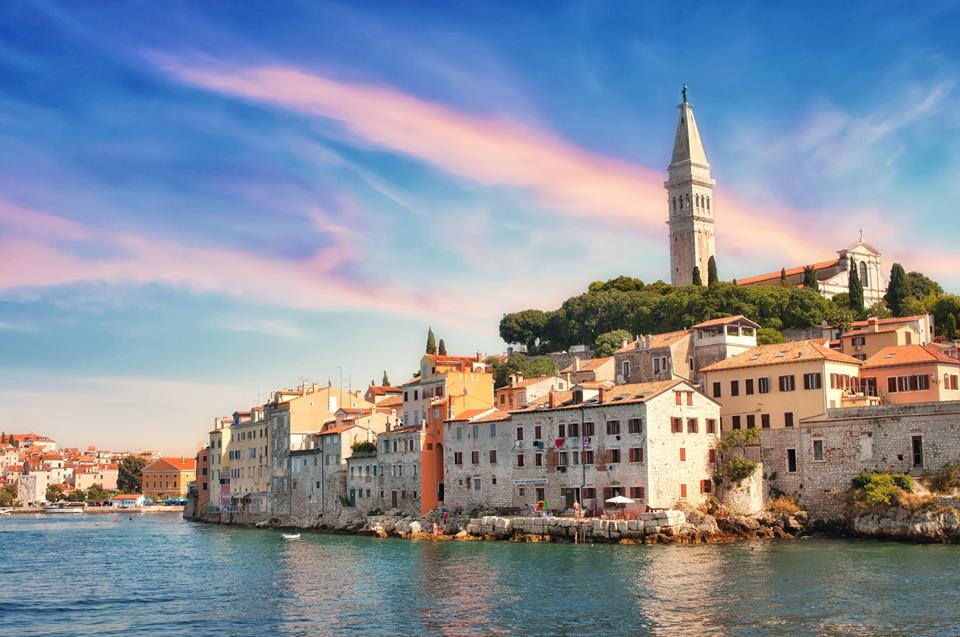
Arrive to Istra two or three days before your charter. Stay in a newly opened hotel in Rovinj – the Grand Park hotel overlooking the old town of Rovinj – the views are incredible! One more hotel worth considering is the heritage Santo Spirito Palazzo, it is a small privately-owned boutique hotel. Both hotels can be booked via Sail Dalmatia as a part of your yachting arrangement. There is so much to explore in Istra from little romantic seaside villages like Rovinj to some of the best vineyards and truffle hunting. The Kozlovic winery is one of them. A superb location, known as ‘little Tuscany’ by the locals, this award-winning winery comes as a total surprise to many wine lovers. For a truly authentic gastronomic experience, consider 'Kamene Price' in Bale. This is one of the best taverns in Istra, a wonderful ambiance. The owners are excellent host and you will have a lovely evening.
SATURDAY: After exploring Istra, you would meet your home for a week in Pula. She is a luxury ketch called Free Wings. Spearheaded by Captain Igor, born and bred in Pula, he is the best person to have on board for exploring this area. His local knowledge is second to none and we guarantee your will enjoy every step of your journey. The rest of the crew, including a very talented chef, are also from Istra. Your first destination is Cres. Cres is the least visited of all Croatian islands. There are colonies of the Eurasian Griffon near Beli, to the north of the island. Conservation of the birds lies with the Eco Centar Caput Insulae. Cres also features one of the loveliest beaches in the area called Lubenice. A small village of a few houses sits on the top of the hill above the beach.
SUNDAY: A morning swim at Sveti Ivan, a lovely beach at Lubenice. If you are in a nature lover category and would like a hiking trip, a short trip to Vransko Jezero can be arranged from here. After lunch, we head to Mali Losinj. Sailing south from Cres you pass Osor, a connection point between two islands - Cres and Losinj. Osor is quite unique, it is an open air museum with the sculptures from various artists on display around the port. A small bridge opens twice a day and it has become a tourist attraction. This is also the major route to sail from the northern part of Cres to Losinj.
MONDAY: Losinj Island. It has two parts – Mali and Veli Losinj that are connected by a bridge at Privlaka. The island earned the name - the vitality island. It is one of the first islands in the Adriatic that has started promoting spas, alternative medicine and homeopathy due to over 1,200 aromatic plants that thrive on the island. The island offers a number of beautiful bays and great cycling trails. The best beach is Cikat bay – which translated to ‘wait’.
TUESDAY: Rab Island – a four towers island as the locals call it. It is probably one of the most beautiful islands in the Adriatic – yes, more pretty than Hvar or Vis! If you would come across Rab in July, you will be lucky enough to witness the Rabska Fjera, a 15Th century medieval festival that lasts 3 days. The whole town is transformed into a massive stage, a torch lit procession of strolling minstrels carrying crossbows. The island is also famous for Rabska Torta – made of almonds and maraschino.
WEDNESDAY: Zverinac – a car free island with 50 permanent residents. With so few people around, the island is very peaceful and there is a real sense of freedom when it comes to hiking around and exploring the island. It is a place where you leave the civilisation behind.
THURSDAY: Ilovik Island – an island with no ATM, pharmacy, no banks and no cars. There is a local doctor, a post office and a few shops and restaurants. It is an oasis of tranquillity.
FRIDAY: Unije Island – on your way back to Pula, you will stop at Unije, your last tranquil stop. There is only one restaurant on the island – hence you will have a dinner on the boat. There are about 20 houses on the island. It’s beautiful island if you come to relax and don’t want to do anything but you need adapt according to the island and people who live here. The time goes slowly and the beauty of that there is not much to do except focusing on your wellbeing especially if you are coming from a stressful environment. It’s a fresh breath of air.
'MULTIGENERATIONAL FAMILY - SPENDING QUALITY TIME WITH GRANPA AND GRANNY'
SATURDAY: Meet the boat at 5pm in Split. A light dinner will be served on the boat. Set sails to Bobovisca na Moru, a charming bay on the western side of Brac Island. The island offers so much to do from quad biking, light hiking, cycling, and is famous for the Golden Cape beach and its natural phenomenon, the beach tip that changes its direction based on the wind. You can also visit the smallest village on the island called Skrip. The village is home to a local family that owns its own olive oil farm and a small museum about their family history and the olive oil production. Kate and her husband are superb hosts. They also have a small serving area in the museum where you can sample the best olive oil pates along with the locally produced 'prsut' and cheese. You can also visit the village of Pucisca famous for the stonemasonry school, where you can take your young ones for a stone cutting session. It is perfectly safe and your kids would love it, they can make thier own souvenir. You will also be able to visit the Osibova bay that has a local aqua park (for the young ones!).
SUNDAY: Today we head off to Stari Grad. A charming village on the northern part of Hvar Island. The village is famous for the cycling route on the UNESCO plain, the oldest planted vineyard. The village is very pretty with the old Dalmatian stone houses with the red tiled roofs and narrow cobbled streets. It was voted as the best European destination in 2018. If you arrive late afternoon this is the best time to pick up a bike and go cycling through the Stari Plain. You can cycle from Stari Grad to Vrboska via the Stari Plain, around 6KM. On your retrun you can stop at the Petar Hektorovic (a famous Croatian poet) Palace. There are a few lovely swimming bays east of the village.
MONDAY: Today we reach the Pakleni Islands opposite Hvar Port. The best swimming bays are found here from Stipanska, Marinkovac, St Klement and Jerolim. A walk from Palmizana to St Klement's bay is a must. It is owned by a local family. Professor Eugenio Meneghello bought a 300-hectare wilderness in 1906, complete with 2 pebble beaches, and planted it with pines, palms, exotic shrubs and aromatic herbs like rosemary and lavender. One century and 3 generations later, his family are the pioneers of eco-tourism in Croatia. His granddaughter-in-law Dagmar and her 3 children still tend their forefather’s ‘Garden of Eden’, but have turned it into an exclusive hideaway with a cluster of villas and two restaurants all built of local stone. The highlight of the day is an adults only trip to a secret winery built into a cave only accessible by boat, exclusive to Sail Dalmatia clients.
TUESDAY: A former military base for the Yugoslav National Army, the island of Vis was closed to foreigners for decades. Today, however, it’s one of Croatia’s best-kept secrets, mainly for its beaches, food, and history. A private tour will enable you to explore the island’s old military sites, abandoned when the army left suddenly in 1992. The island also features some of the best hidden bays - Stoncica and Stiniva. For an authentic meal experience, we suggest Konoba Magic. We will not say much, you should experience it for yourself. If you feel a bit more adventurous, we can also arrange a scooter ride around the island. These are small 50HP scooters, no previous experience required.
WEDNESDAY: Komiza and Bisevo. Komiza is a tiny fishing village on the western side of the island. A short boat drive from Komiza is Bisevo's Blue Grotto - a true phenomenon of irridescent blue light that enchants at the first sight. A sea kayak family tour can be arranged next to the Green Grotto.
THURSDAY: Sail to Tatinja. A hidden bay on the southern part of Solta Island. One of the most beautiful bays, home to a quirky tavern called Lonely Paradise. The tavern depicts the bay perfectly - it is indeed a lonely paradise. Solta is famous for bee keeping and we can take you to a local bee keeper (a true bee enthusiast who gives a lecture on how bees collect the honey and their role in keeping the eco-system in balance, a very interesting lecture especially for the young ones). You can also buy the local honey.
FRIDAY: Finish your week in the heritage town of Trogir. Set on a small island connected with a bridge with the mainland, Trogir is UNESCO protected. The Old Town is full of historical sites and stunning Venetian architecture. Trogir is also home to a local lady who set up a cooking school at her home. It is one of the most popular experiences and the best way to sample the local cuisine. Ivana, the lady from Trogir will take you to the local market where you will buy fresh ingredients for your lunch followed by a cooking session at her home.
THE ADRIATIC ODYSSEY FOR OVER 60S
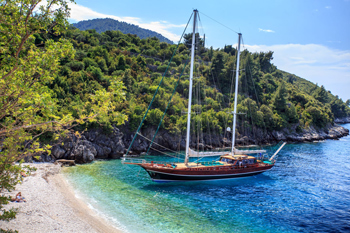
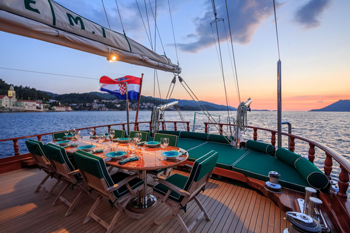
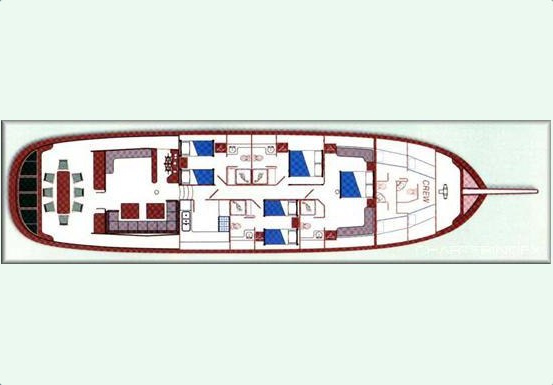
SATURDAY: Arrive at Split International. Our English speaking driver will have a board with your name on, please look for him. A complimentary luxury minivan transfer to the Carpe Diem gulet. Upon arrival, the crew will offload your luggage and allocate it to the cabins. A welcome drink and snack provided while Frano and Lorena will give you a short briefing about the boat and your itinerary. Your first dinner is normally taken on the boat and you can select either having it on the way to Brac Island or once you arrived to Milna Bay on Brac Island which is your first stop. The chef can cater for any dietary requirements from vegetarian, vegan, gluten free or any other preferences, this is normally dicussed during the booking process. The dinners are taken in the aft deck (the area at the back of the boat with a large dining table) during the sunset. The sunsets are very special in the Adriatic, the zero pollution makes all colours more vivid and clear, a truly special moment. Finish your day with a good night sleep. The swooshing and splashing of water, the rhythmic movement of the boat and the sound of the wind in the sails will relax you and you will wake up well rested and energised.
SUNDAY: The best way to start off your day is with a swim in the crystal clear waters of the Adriatic. The Adriatic Sea in the cleanest sea in Europe with a high level of salinity. In addition, the saltiness of the sea air is composed of charged ions that aid in the body’s oxygen absorption, which in turn balances serotonin levels. The more balanced your body’s serotonin levels are, the happier you’re going to be! Apart from swimming, you can also enjoy some of the water sport equipment available on the Carpe Diem such as kayaking, SUP or yoga. After the morning activity session, join the party for breakfast. The breakfast is normally served between 7.30 to 9 am or later if you prefer. The breakfast will be served based on your preferences, but you can expect freshly squeezed orange juice (we use organic oranges and lemons), eggs, oats, fresh fruit, yogurts and pastry. There is a Nescafe dolce gusto as well as filter and instant coffees and various teas. After a delicious breakfast, put your shades on and get ready for exploring Brac Island. For a 'movie set experience' rent a convertible car and drive around the island or if you prefer a bit more activity you can rent a bicycle. Please note if you are visiting in July or August, it will be very hot so make sure you take a lot of water with you. You can head east to the smallest village on the island called Skrip, in the same village you can visit a tiny museum about the olive oil production. The north part of the island is home to the oldest masonry school in Pucisca. The white lime and marble stone from Brac was shipped all over the world, and many buildings feature stone from Brac. Among them the most popular ones are: White House, Diocletian Palace in Split, the Brandenburg Gate in Berlin, and parliament buildings in Budapest and Vienna. Finally, you can head south to Blaca Monastery, a 15th century monastery carved into stone. After touirng Brac Island, return to the boat for a tasty lunch. You are in Croatia and this means an early afternoon is reserved for 'siesta' (a nap after lunch)! If this might not be of your liking, then reading a book, sunbathing or relaxing on the super comfortable sofas in the aft deck can work too. Whilst you are 'siesting', the crew will set sails to your next port of call - Hvar Island.
MONDAY: Branded as 'St Tropez of Croatia', Hvar is a charming island with a stunning Venetian architecture. Home to the oldest public theatre that has been carefully restored over the last 20 years and opens its doors this May, Spanjola Fortress that sits high above the port and of course the swankiest restaurants, beach bars and clubs. Our clients very often spend 2-3 days on Hvar, it is a place that you simply cannot get enough of. Whether you are relaxing on the boat or enjoying a spa treatment at Bonj Les, or exploring the lavender fields, Hvar has something for everybody. If you want to mingle with celebrities head to Passarola, an upscale restaurant specialised in the Dalmatian cuisine and antique Dalmatian wines. Once you had enough of the port's buzz, cross over to the Pakleni Islands where most of boats are moored. Hvar Port is very small and most of the boats moor opposite at Pakleni.
TUESDAY: Vis is one of the most mysterious of all the Croatian islands. The furthest of the main central Dalmatian islands from the coast, Vis spent much of its recent history serving as a naval base, cut off from foreign visitors from the 1950s right up until 1989. The isolation preserved the island from development and drove much of the population to move elsewhere in search of work, leaving it underpopulated for many years. The island is divided between two small beautiful towns – Vis Town, originally associated with upper class nobility, and Komiza, with its fishing history and pirate tales. Explore one of the numerous swimming bays such as Stoncica, and of course the Geopark. This protected ‘‘geopark’’, renowned for its rare sea birds, corals and dolphin populations, is also home to the island of Bisevo’s Blue Grotto. Sail Dalmatia guests have access to a private visit of the Blue Grotto. You will be silenced by the holy aquamarine light in this cathedral space. As the filming location of "Mamma Mia 2", Vis won the hearts of many including Pierce Brosnan, who allegedly enjoyed the carob cake so much that the owner of the local tavern Roki named the carob cake as "Pierce cake". You can explore the island with a minivan private tour, or if you fancy a bit of drive you can also rent a small scooter. The most charming part of Vis Town is an area called Kut where most of restaurants are located - Vatrica, Val, Pojoda and Kaliopa.
WEDNESDAY: Perched on a tiny islet, Korcula Town (the town bears the same name as the island) is locally known as 'little Dubrovnik'. A place that has the highest concentration of signers, literally every household will have at least one family member with the singing capabilities. If you do not believe us, ask Frano, the Carpe Diem Captain to sign a song for you! Once covered in dense woods, the original Greek settlers named the island ‘Korkyra Melaina’ or ‘Black Korcula’. Nowadays, the island is home to vineyards, olive groves and small villages as well as being rich in art and culture. The island is divided between two large villages - Vela Luka on the western side of the island and Korcula Town on the eastern side of the island. In front of Vela Luka, you can stop at Badija, a lovely swimming bay. Korcula Town is a typical medieval walled Dalmatian city, with its round defensive towers and cluster of red-roofed houses. Marco Polo, the famous world-traveller and writer, as well as a Venetian merchant, is reputed to have been born in Korcula. The best way to explore Korcula Town is on foot (a private guide is available free of charge). Korcula is the biggest wine producer and you will be able to visit of one of the local vineyards. Posip, Rukatac, Grk and Plavac (the best wines in Croatia) all originate from Korcula. An insider's tip: The street known as 'Ulica javne dobrotvornosti' (Charity Street) leading off the square, is the only Korcula street without steps and is therefore referred to as the Street of Thinkers by the locals. Korcula Town offers a good selection of local restaurants from the upscale Lesic Dimitri to our favourite local tavern Maha in Zrnovo.
THURSDAY: Today you will start heading north towards Split. The crew will move the boat to Scedro Island, a tiny islet in front of Hvar Port, considered as one of the best swimming spots in the area. Here, you will also be able to use some of the water sport equipment i.e. SUP or kayak or you can simply swim in crystal clear waters. The island is also home to a lovely seasonal tavern, the place is a bit scruffy but the owner serves whatever he catches from the sea on the day.
FRIDAY: After an active day at Scedro, head to Maslinica on Solta Island. The bay of Maslinica is a naturally sheltered bay with a charming 14th century castle converted into a luxury boutique hotel. The bay is also home to a small marina. A number of lovely swimming bays are within a short sail like Krknjasi, Tatinja and Sesula. Your last night can be arranged with a farewell dinner in a quiet bay or you can head out for an evening meal, we recommend Sampinjer in Maslinica that offers stunning views of the bay. Disembark in Split at 9am on Saturday morning.
'ECO FRIENDLY CRUISE'
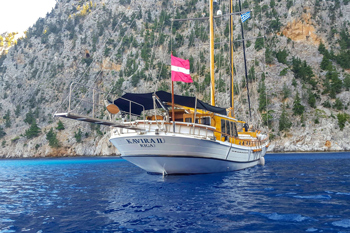
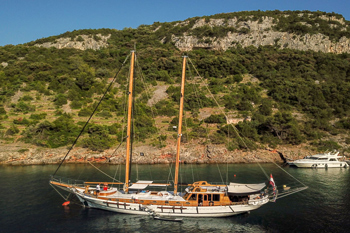
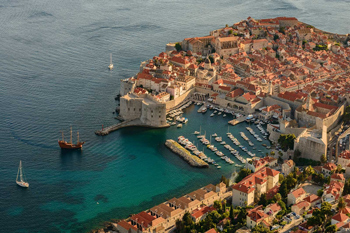
On a mission to raise environmental and sustainability standards in the Adriatic, Sail Dalmatia proudly unveils Kavira II: Croatia’s first eco-friendly gulet – available for exclusive charter to its guests.
SATURDAY: Join the Kavira II in Dubrovnik. You will sail to Elafiti islands while the chef makes a light dinner for you. Kavira's chef (Toni) works magic in the kitchen. Only locally (predominately organic) grown ingredients are used and you will be able to sample the very best of Dalmatian cuisine. He is able to cater for any diet including the super popular vegan diet. He makes his own over the night gluten free oats, mixed with the local berries and chia seeds. We hope that before joining us on the boat you had an opportunity to explore the Old Town and its stunning sites. Alternatively, we can arrange a private tour of the Old Town. There are so many interesting facts about the Old Town and we highly recommed having one of our private guides to learn about Dubrovnik's fascinating history. Dubrovnik managed to keep its indpendence for nearly 400 years and one of the most precious things the locals considered was freedom. Above the entrance to the Lovrijenac fortress a latin inscription says ' non bene pro toto libertas venditur auro' - freedom is not for sale, not even for all riches of the world. Dubrovnik is a truly magical place and visitors very often describe is as 'the love at the first sight'. Do not miss the cable car as the Srdj mountain offers the best views of the Old Town and the Walls tour for the most authentic experience of the Old Town. Dubrovnik is also home to a Michelin star restaurant - 360, overlooking the Old Town.
SUNDAY: If you leave Dubrovnik on Sunday, we suggest heading to Elafiti. It is an archipelago west of Dubrovnik with three small islands - Lopud (car free), Kolocep and Sipan. Kolocep is a very sleepy island covered in dense pine forest lined by sandy beaches. Lopud, a car free island is dominated by its Franciscan Monastery and the beautiful Gjorgic-Mayneri Park. You might like to visit the picturesque Sunj beach for a swim, or stroll through the car free streets of Lopud itself. An interesting site on Lopud is ‘Your Black Horizon Art Pavillion’ – an interdisciplinary project by artist Olafur Eliasson and architect David Adjaye, commissioned by Thyssen-Bornemisza Art Contemporary, highly recommended for a visit. The Elafiti are also famous for sea kayaking that is becoming the main activity in the area. Kavira does have a SUP board and a kayak so go ahead and explore a number of hidden beaches and bays. If you would like to sample a local seafood tavern with no menu but you eat whatever the owner catches on the day - head to a tavern in Sipanska Luka called Kod Marka for your dinner, you will not be disappointed. On your return to the boat, you can watch a movie under the stars in the aft deck (there is a large projector installed in the aft deck) or you can retire to your comfortable AC cabin for a good night sleep. Kavira has a fully silent AC so a good night sleep is guaranteed!
MONDAY: Today you head to Mljet, one of the most beautiful of all of the islands. The Mljet National Park is home to fresh pine forests, exceptional nature and scenic saltwater lakes. According to legend, Odysseus spent seven years here captivated by the beauty of nature. You may also like to spend some time snorkeling, as the island is renowned for its wealth of underwater sea life and its spectacular sandy shoreline. There is a cycling path around the lakes ideal for running and cycling. The bicycles can be rented at the entrance to the national park. In the middle of the lake you will find a small islet with a Dominican Monastery and a restaurant on the ground level. A water taxi connects the islet with the main path. Mljet is also the best spot for scuba diving due to crystal clear waters and no development. Kavira II does not carry scuba diving equipment but the clients have access to a private scuba diving boat that can meet Kavira II, alternatively we will take you to a local scuba diving centre. If you are a runner or practice yoga and meditation, the path around the lake is a heaven for these activities. You will have lunch on board, moored either in Pomena or Polace. Mljet does not offer a lot of choice when comes to restaurants, there are a few local taverns around, one is Konoba Herc in Pomena, a lovely tavern at the waterfront.
TUESDAY: If the weather allows it, you will be able to visit Lastovo Island. A former naval base, the island was closed off to any visitors for nearly 50 years. The island has only one settlement - a tiny village called Lastovo. This is a place where you leave the civilisation behind. If you would like to explore the island, we can arrange it with a local guy (the only tour guide on the island) who will take you around and introduce you to local myths and stories. There are only two bays where you can moor - Skrivena Luka and Zaklopatica, both very pretty and super quiet. Zaklopatica is home to a local tavern if you would like to have a meal onshore.
WEDNESDAY: Perched on a tiny islet, Korcula Town (the town bears the same name as the island) is locally known as 'little Dubrovnik'. Once covered in dense woods, the original Greek settlers named the island ‘Korkyra Melaina’ or ‘Black Korcula’. Nowadays, the island is home to vineyards, olive groves and small villages as well as being rich in art and culture. The island is divided between two large villages - Vela Luka on the western side of the island and Korcula Town on the eastern side of the island. In front of Vela Luka, you can stop at Badija, a lovely swimming bay. Korcula Town is a typical medieval walled Dalmatian city, with its round defensive towers and cluster of red-roofed houses. Marco Polo, the famous world-traveller and writer, as well as a Venetian merchant, is reputed to have been born in Korcula. The best way to explore Korcula Town is on foot. Korcula is the biggest wine producer and you will be able to visit one of the local vineyards. Posip, Rukatac, Grk and Plavac (the best wines in Croatia) all originate from Korcula. An insider's tip: The street known as 'Ulica javne dobrotvornosti' (Charity Street) leading off the square, is the only Korcula street without steps and is therefore referred to as the Street of Thinkers by the locals. Korcula Town offers a good selection of local restaurant from an upscale Lesic Dimitri to our favourite local tavern Maha in Zrnovo. There is much more to explore on Korcula Island. The inland villages are super charming and worth a visit. For example, Blato, Prizba or Rascisce.
THURSDAY: Branded as 'St Tropez of Croatia', Hvar is a charming island with a stunning Venetian architecture. Home to the oldest public theatre that has been carefully restored over the last 20 years and opens its doors this May, Spanjola Fortress that sits high above the port and of course the swankiest restaurants, beach bars and clubs. A new hotel called Palace Elisabeth is due to open as well. Our clients very often spend 2-3 days on Hvar, it is a place that you simply cannot get enough of. Whether you are relaxing at Laganini beach bar or you are doing a yoga session on the Adriana roof terrace or enjoying a spa treatment at Bonj Les, or exploring the lavender fields, Hvar has something for everybody. If you want to mingle with celebrities head to Passarola, an upscale restaurant specialised in the Dalmatian cuisine and antique Dalmatian wines. Once you had enough of the port's buzz, cross over to the Pakleni Islands where most of boats are moored. Hvar Port is very small and most of the boats moor opposite at Pakleni.
FRIDAY: Head to Solta Island. Solta is well known for its honey made from wild rosemary. Locally it is called Olintio and it has been in use since the ancient times. There is an old inscription found about honey from Solta and its healing attributes. Along with wine and olive oil making, beekeeping and honey production is one of the oldest traditions of the island. The beekeeping cooperative was founded in 1875 and even the French had a special committee working on evaluating the honey. If you would like to visit Tvrdic honey please let us know (Goran, the owner, will give you a very interesting story about the history of honey and its healing attributes). You can then proceed to Maslinica. The bay of Maslinica is a naturally sheltered bay with a charming 14th century castle converted into a luxury boutique hotel. The bay is also home to a small marina. A number of lovely swimming bays are within a short sail like Krknjasi, Tatinja and Sesula. Your last night can be arranged with a farewell dinner in a quiet bay or you can head out for an evening meal, we recommend Sampinjer in Maslinica that offers stunning views of the bay. Alternatively, spend a night in Stomorska, an island village with a sailing history. Disembark in Split at 9am on Saturday morning.
WINE TOURS AND RUSTIC TAVERNS - THE BEST OF DALMATIA
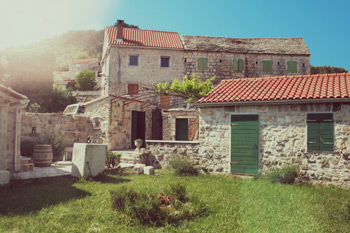
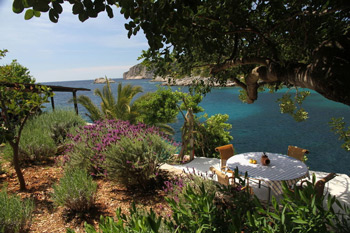
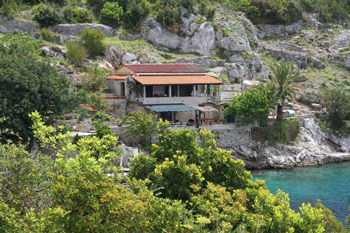
We were the first Croatia yacht broker who introduced a route that combines a Croatia gulet cruise and visits to the local vineyards and taverns. Here we share details on one of the top local wineries and authentic taverns. All gulet cruises can be tailored to include a visit to the best local wine cellars and best taverns. We also arrange wine tastings directly with the owners there are no super expensive packages of 50 to 100 Euro for the wine tasting! The prices are between 50 Kuna to 150 Kuna, depending on how many wines you would like to sample and if you want some cheese and local Prosciutto.
SATURDAY: Your Croatia wine and food gulet cruise starts on Solta Island in a bay called Tatinja. The bay is an absolute heaven, a hidden gem with a lovely tavern called Lonely Paradise. Do not expect any upscale dining, the place is very simple (a bit scruffy), but do not be put off by it as you are in for a big treat. The owner cooks everything from the scratch, we suggest a Fish based Peka with the local wine called Dobricic, all this with the most stunning views of the bay. We gurantee you will come back thanking us! From here, we can arrange a visit to Tvrdic Honey and wine. Goran and his wife Natasa are superb hosts and not only that Goran will give you a very insightful presentation on bees but his wife will cook the most delicious dish! This is one of the places that should not be missed. This is the real Dalmatia far away from the swanky restaurants and glitz. Next door is the Olive Orchard where you can sample the local olive oil and learn how the locals produce it.
SUNDAY: Today we move to Brac Island and the village of Nerezisca. The wine tasting takes a place in a rustic environment, a typical Dalmatian stone house, run by a local family who produce their own high-quality red wine “plavac mali Franulic”. It is completely eco-produced, from the vineyard on the southern slopes of the island. Coupled with wine, you will also be able to sample their olive oil (the best olive oil comes from Brac Island) and local dishes from Brac. From here, you can move to Skrip, the smallest village on the island and visit a small museum on the olive oil production.
MONDAY: Today, we sail to the wine 'mecca' in Croatia. The southern slopes of Hvar Island are home to Sveta Nedilja region where most of Hvar wine is produced. We start our tour in Jelsa and Vrboska, on the northern part of the island. Two wineries in Jelsa are Pinjata and Dubokovic. Run by the charming Marija Gabelic, Pinjata is a small wine heaven. In the very authentic ambience of Pinjata wine cellar you can taste two indigenous white varieties Bogdanjuš and a piece of the black vine sort Plavac. The wine cellar is also offering an opportunity to cook traditional Dalmatian dishes. A wine tasting is charged at 20 Euro per person. Highy recommended. Another award wining winery belongs to Dubokovic family. The wines are Bogdanjusa, Plavac Mali, Drnekusa and Marstina. The family is also quite creative when comes to naming the wines - '2718 hours of sun trapped inside a bottle' a rather suitable name for Hvar Island. A superb candlelit wine experience. Another winery worth having a look is Lacman in Selca. The owner will walk you through the winery and introduce you to their wine production. You will also have a chance to sample their wine.
TUESDAY: Vis is one of the most mysterious of all the Croatian islands. The furthest of the main central Dalmatian islands from the coast, Vis spent much of its recent history serving as a naval base, cut off from foreign visitors from the 1950s right up until 1989. The isolation preserved the island from development and drove much of the population to move elsewhere in search of work, leaving it underpopulated for many years. The island is divided between two small beautiful towns – Vis Town, originally associated with upper class nobility, and Komiza, with its fishing history and pirate tales. Our favourite winery is Roki's. Oliver Roki has been responsible, among other things, for the improbable resumption of the island’s cricketing tradition as well as introducing the world to Peka. He was born in Western Australia before his parents shipped the family back to their ancestral island home in the 1980s. They settled in Plisko Poje, the village in the centre of the island where earlier generations of the Roki clan first made wine about 200 years earlier. The village is now home to Roki’s winery, restaurant and tour business. Brandnew winemaking premises, complete with tasting rooms, opened in 2017 to produce a white from the local Bugava grape, and a luscious, fully 15 per cent red called Plavac Mali, much loved by the Viennese aristocracy. In a nearby restaurant, where a mulberry tree casts a shadow, you will discover just how well the Roki wines go with peka, a slow-cooked pot roast of octopus, herbs and vegetables prepared on open fires, the regional speciality that Roki’s does as well as anybody.
WEDNESDAY: We leave the shores of Vis and head to beautiful Korcula. Once covered in dense woods, the original Greek settlers named the island ‘Korkyra Melaina’ or ‘Black Korcula’. Nowadays, the island is home to vineyards, olive groves and small villages as well as being rich in art and culture. The best wines are found in Lumbarda. The best winery is Lovric. It is a small producer of Grk and Plavac wines. One more winery worth a visit is Bire in Lumbarda. We then suggest heading to Konoba Belin in Zrnovo. It is still relatively unkown to tourists, a lovely place where you will be able to sample the best Makaroni from this area - this is a pasta wrapped around a skewer so it is left with a hollow centre served with a paprika and oregano meat sauce.
THURSDAY: We leave the best for the last part of your wine and food Croatia gulet charter expereience. Peljesac, the home of superb Plavac Mali and a stunning location both found at Korta Katarina. Something really special and you have to see it to believe it. In addition to Korta Katarina, Peljesac is also home to Saints Hills vineyard run by the Tolj family, a wonderful location and setting, not to be missed. In the afteroon, you head back to Hvar for a slow return to Split.
FRIDAY: On your last night we take you to our little secret that will be revealed to you during the week. We guarantee you will not be disappointed.
